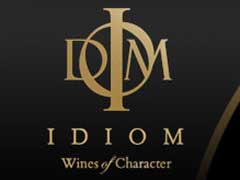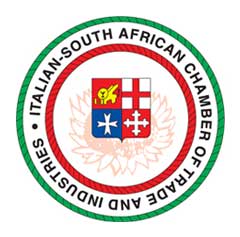Le peripezie del monumento a Paul Kruger in Pretoria e delle sue sentinelle dai lineamenti italiani
- Details
- Created on Friday, 15 June 2012 10:02
 L'autore di questo articolo sul monumento al presidente Paul Kruger, in Church Square a Pretoria, Eric Bolsmann, è un ricercatore storico e anche pittore. Ha pubblicato diversi libri (11), l’ultimo dei quali è “French Footsteps in South Africa” – 2008 – di qualità molto superiore a quello della Ilse Ferreira sulle “nostre” orme. L'articolo narra le peripezie dello scultore Anton van Wouw e della sua opera. Il primo fu costretto ad andare a Roma per trovare una fonderia abbastanza grande per un lavoro da 200 tonnellate, mentre le statue, spedite dall'Italia per Maputo nel 1899, furono composte a rate nel monumento attuale in Church Square soltanto nel 1955. Una prima versione del monumento, senza le statue che raffigurano i "voortrekkers" boeri che con Kruger fondarono la libera Repubblica del Transvaal, fu eretta nel 1913 in un parco di Pretoria e una seconda versione, questa volta completa, prese forma nel 1925 davanti alla stazione ferroviaria della capitale politica dell'Unione del Sud Africa scaturita dalla guerra anglo-boera che aveva nel frattempo costretto Kruger all'esilio.
L'autore di questo articolo sul monumento al presidente Paul Kruger, in Church Square a Pretoria, Eric Bolsmann, è un ricercatore storico e anche pittore. Ha pubblicato diversi libri (11), l’ultimo dei quali è “French Footsteps in South Africa” – 2008 – di qualità molto superiore a quello della Ilse Ferreira sulle “nostre” orme. L'articolo narra le peripezie dello scultore Anton van Wouw e della sua opera. Il primo fu costretto ad andare a Roma per trovare una fonderia abbastanza grande per un lavoro da 200 tonnellate, mentre le statue, spedite dall'Italia per Maputo nel 1899, furono composte a rate nel monumento attuale in Church Square soltanto nel 1955. Una prima versione del monumento, senza le statue che raffigurano i "voortrekkers" boeri che con Kruger fondarono la libera Repubblica del Transvaal, fu eretta nel 1913 in un parco di Pretoria e una seconda versione, questa volta completa, prese forma nel 1925 davanti alla stazione ferroviaria della capitale politica dell'Unione del Sud Africa scaturita dalla guerra anglo-boera che aveva nel frattempo costretto Kruger all'esilio.
Le statue inizialmente mancanti delle sentinelle boere erano state a lungo preda di guerra di Lord Kitchener, comandante delle truppe britanniche, i cui eredi le restituirono soltanto perché sollecitati dal Re Giorgio V a richiesta del generale Smuts.
L'autore dell'articolo riferisce come lo scultore dovette servirsi per raffigurare le sentinelle boere di modelli viventi italiani e cita la "Storia degli italiani in Sud Africa" di Gabriele Sani per la parte che ricostruisce l'identità di uno di essi, ma chiude il suo lavoro chiedendosi: "Ma chi diavolo era Tommaso?".
Are the sentries at the Kruger statue in pretoria replicas of Italians?
Eric Bolsmann

When the Dutch-born sculptor Anton van wouw (1862-1945) was given the task to create a statue of Paul Kruger, the four times President of the South African Republic, at the close of the nineteenth century, he faced the reality that no casting facility for the work of the proportions required was available in South Africa. With no choice but to have the casting done in Europe, he received formal directions from the firm Sammy Marks, who had donated £10 000 for its creation, to proceed to Europe at the expense of his company. It was Van wouw's wish to have the statue cast in fatherland, but there, too, no suitable facilities could be found. Van Wouw then proceeded to Rome, to engage the foundry of Franciscus Bruno for the casting of this, his most famous work.
The sponsors had stipulated a two-year period during which the statue had to be completed. The initial process seemed slow. The representative of the anxious sponsor, sent out to supervise Van Wouw, had to realise that part of what appeared to be a problem was due to the sculptor taking ill, and mainly because of the fact that every task had to be carried out by hand. Firstly, the small models drawn on paper had to be moulded in every detail, and proportions in clay or wax had to be exact. Then, the larger plaster casts, four times the size of small models, or
marquettes, as they are known, are produced. Ultimately these were cast in bronze by Bruno.
Once Van Wouw had completed the Kruger statue itself, he started to prepare the supporting figures of the Boer sentries. Next he made the models of the four bronze plaques showing important episodes from the life of the President and a monogram, with the letter "K".
The completed sculptures weighing 200 tons were packed in large crates and shipped from Italy to Delagoa Bay (Maputo) in Portuguese East Africa in 1899. From there they were to be railed to Pretoria and mounted on a pedestal on Church square in the centre of the town.
What had not been anticipated, however, was the outbreak of the South African war in October of that year. This tragic event prevented the railing of the sculptures from Lourenzo Marques to Pretoria.
It was only in 1912 that the Kruger Statue, minus the Boer sentries finally left Lourenzo Marques. No one seemed to know what had happened to the supporting figures and Van wouw had lost all interest in his monumental work when the city Council of Pretoria decided to erect it in nearby Prince's park in Pretoria West. And there it was unveiled, minus the sentries, on 24 May, 1913.
It was then brought to the attention of the South African authorities that the sentries were in England. Lord Kitchener had looted them, it was said. He had two of the Boer figures displayed in the grounds of the Royal Engineers' college at Chatham near London. The other two Lord Kitchener mounted at his residence, Broome park.
When Kitchener was requested to have the figures returned to South Africa, he insisted that the pieces were given to him by Sammy Marks and they could therefore not be considered as war loot.
After Kitchener's death, in 1916, strong representations were made to the British authorities, but not before 1920 were the whereabouts of the pieces revealed. It took another two years and the intervention of General Smuts before the figures and the relief arrived in Pretoria. The matter was submitted to His Majesty King George V, who, as colonel-in-Chief of the Royal Engineers, made it known that he wished that the two figures and bas reliefs at Chatham were to be presented to the Union Government. Lord Kitchener's heirs handed the sculptures and reliefs to His Majesty's Government and towards the end of 1921 they were shipped to Durban and from there railed to Pretoria.
On 10 October 1925, the centenary of President Kruger's birth, the Kruger Statue with the four sentries was unveiled in front of Pretoria Railway Station with Kruger looking down the Street that bears his name to distant Church square.
Thirty years should pass before the statue, on 10 October 1955, was finally erected on Church Square with the old Raadsaal, the House of Parliament of the Boers as a backdrop.
Today tourist guides are proud to point out details about the monument. They may tell their audiences the urban legend that the top hat the president wears is hollow, and that the four Boer sentries were, in the absence of Boers in Rome during Wouw's time, modelled on Neapolitan fishermen. In fact, in order to depict the traditional dress and accessories faithfully, original clothing and museum pieces were forwarded to Van Wouw in Italy.
According to another legend concerning one of the sentries, presented by Sani in "History of Italians in South Africa 1489-1989", p. 61, Van Wouw chose "a young Italian sculptor called Tomaso (or Tommaso) to pose as one of pioneers placed at the corners of the monument". Sani has it that "in fact of much protest from his wife and daughter, 'Tommaso' was obliged to grow a thick beard, the Boer way, in order to fit the role of the Dapper voortrekker with his dappering baard".
Van Wouw is supposed to have been "particularly struck by Tommaso's expressive eyes, and in order to complete the masterpiece, the model was obliged to wear authentic clothes of the time of the Trek especially brought to Italy with other accessories, while the veldskoene were manufactured in Rome to a design by Van Wouw".
How long this historic statue of the beloved president of the South African Republic will remain on Church square is anyone's guess. After the change of the South African government in 1994, voices have been heard that the Kruger statue will have to be removed from the square. That the day will come when the link of this beautiful statue with Rome will be once more on the move, few Pretorians doubt.
Before this happens, however, you may want to inspect the sentries. Their good looks should give their identity away, wouldn't you think so? But who on earth is Tommaso?




















